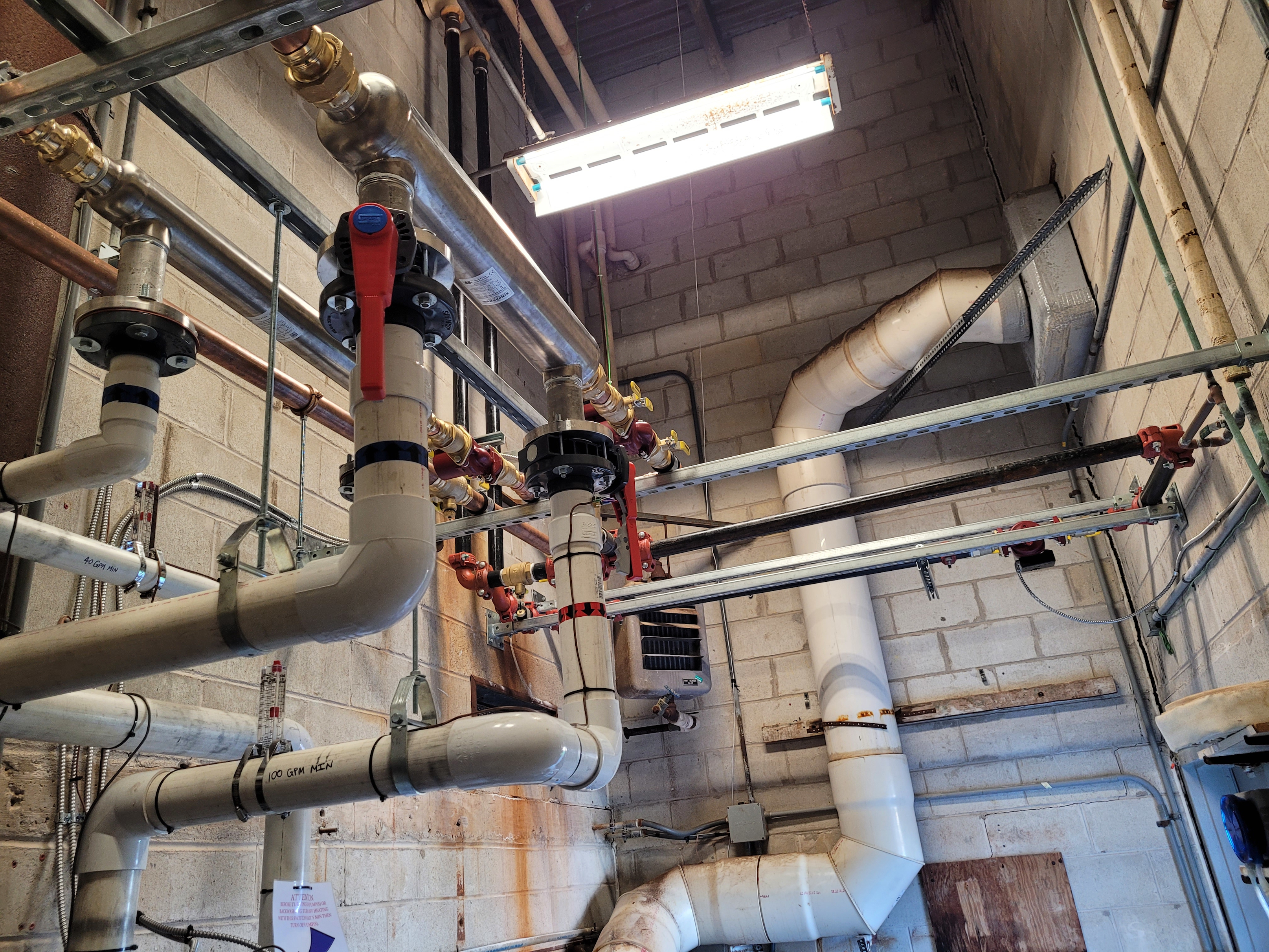Look Beyond the Boiler Room
Failing to address the system as a whole means that high-efficiency boilers fail to operate at peak performance or the system doesn’t operate as intended.

Our company designs and installs many commercial hydronic heating systems, but on a more regular basis, we’re called in to maintain or troubleshoot systems installed by other companies. We’ve found time and again that even when a condensing boiler system is properly designed and built, many engineers and installers rarely bother to look beyond the boiler room.
Failing to address the system as a whole means, at best, that high-efficiency boilers fail to operate at peak performance or, at worst, the system doesn’t operate as intended. Whether the boiler system serves a space-heating application, pool heating, volume water heating or an industrial process, the distribution piping and heat-emitting (radiation) components must all be inspected and considered before a retrofit.
It’s not uncommon for us to receive a call about a relatively new boiler system not operating correctly. This most recently happened in November 2022.
The call came from a community recreation center in Pennsylvania. Four years ago, the facility’s boiler system — dedicated to heating two indoor pools — was updated with new, high-efficiency boilers; two 399 MBH condensing boilers, to be exact. In that time, the pools never maintained setpoint temperature. While that’s a comfort issue, there’s an additional concern. Water temperature greatly affects how treatment chemicals affect the water in the pool.
The maintenance staff couldn’t find the issue. Every time the installing contractor was called back, the techs looked at the boilers and determined that the units were firing as intended. After they exhausted all their options and grew tired of fluctuating pool temperatures, they found us online and gave us a call.
The first thing we did was look at the boilers and compare them to the load. On paper, everything checked out. The boilers were of sufficient capacity and were installed properly. The near-boiler piping was correctly installed, too. So, we looked elsewhere.
Diving into the boiler controls, we found that the units were maintaining limit with only a 5-degree delta-T across the heat exchanger. That was a red flag. It told us that the boilers were doing their job, but the heat wasn’t removed from the boiler loop as intended. It wasn’t being rejected into the pool volume.
Downstream
Looking beyond the near-boiler piping, we found that none of the other original system components had been replaced. There was an old, 2-horsepower circulator with a pneumatic three-way mixing valve. Paired with the mixing valve, this pump recirculates water through two plate-and-frame heat exchangers.
At the time of the original system installation, this design made sense because the boilers were cast iron. In applications like this, conventional boilers need the protection of a mixing valve to keep the delta-T across the boiler low enough to prevent condensation within the cast-iron heat exchanger or, worse yet, prevent a section from cracking. However, limiting the delta-T in a condensing boiler application limits runtimes and dramatically reduces efficiency.
We then checked the pressure differential across the main loop and mixing valve to be sure the pump was, in fact, moving water. It was.
The main issue became evident when we manually operated the mixing valve. As intended, it was maintaining the boiler return water at 170 degrees. That’s a little too high, even for a cast-iron boiler and absurdly high for a condensing boiler system.
This suggested that there were issues with the two plate-and-frame heat exchangers, which isolated the boiler loop from the pool water. These units were full of scale, greatly reducing their ability to transfer heat from the source to the load while simultaneously increasing pumping resistance. The piping to and from the heat exchangers also was sized incorrectly.
Changing The Heat Distribution
We formulated a solution to dramatically lower return water temperatures, increase heat transfer and reduce pump horsepower.
First, we removed the three-way mixing valve and the big, 2-horsepower circulator. In traditional hydronic heating speak, the boiler loop became our primary loop, and each of the two heat exchangers became a secondary loop. A set of closely spaced tees and a wet-rotor circulator for each heat exchanger saw to this. Each pump (the two zone pumps and the system pump) runs only when there’s a call for heat, unlike the original pump, which ran 24/7.
With that complete, we discarded the old heat exchangers and replaced them with titanium shell-and-tube heat exchangers. The titanium heat exchangers we install withstand harsh pool water conditions much better than stainless steel, come with a lifetime warranty, and are easier to service. Ease of service means the heat exchangers might actually be serviced by maintenance staff!
The new heat exchangers are much larger in capacity than the original units. This allows us to achieve a larger delta-T across the exchangers, meaning a lot more heat from the boiler loop is transferred to the pool water.
We took this a step further by decreasing the flow on the boiler side from approximately 80 gallons per minute to 40 gpm and increasing the flow on the pool side from roughly 60 gpm to 100 gpm. The latter was accomplished by reconfiguring some of the piping in the pool pump room.
Energy Savings, Longevity And Healthier Conditions
Today, the delta-T across the titanium heat exchangers is 40 degrees, and the delta-T across boilers is between 35 degrees and 40 degrees.
This work took place late last fall, and the feedback we’ve received has been extremely positive. Most importantly, the pool temperatures are rock stable, within half a degree of setpoint, and the boilers are running longer cycles and condensing and operating as intended.
While it’s not being tracked individually, electrical use will have fallen due to the decrease in pump horsepower and the frequency with which the pumps operate.
Due to the fewer, longer boiler cycles, the changes made will extend the life of the boilers, and the heat exchangers are now easier to service. Finally, stabilizing the pool water temperatures has led to more consistent chemical levels within the pool water, a health benefit that’s difficult to quantify.





